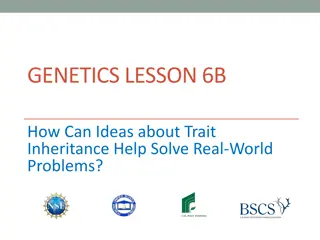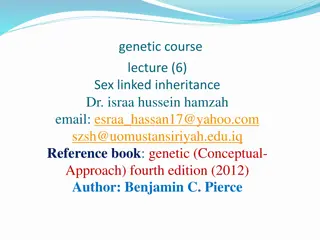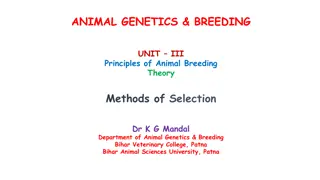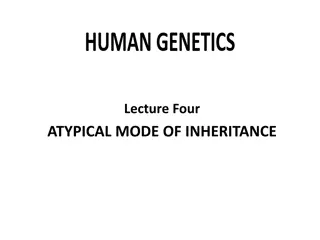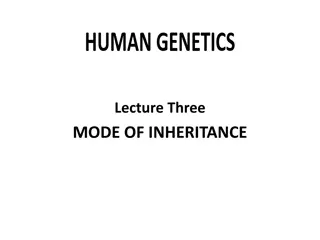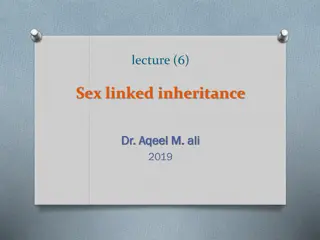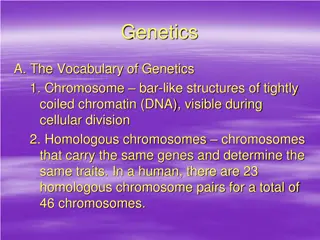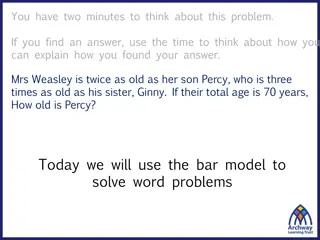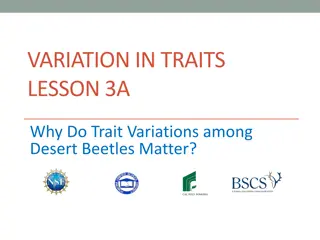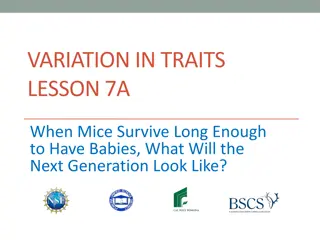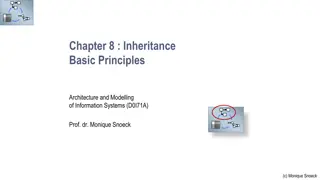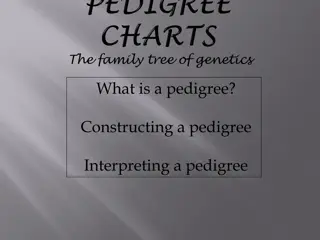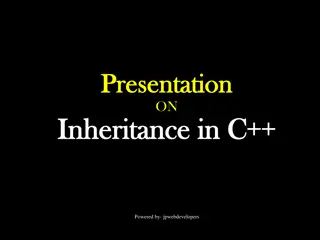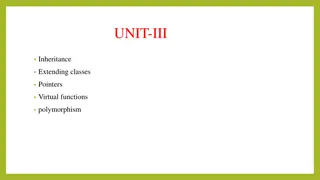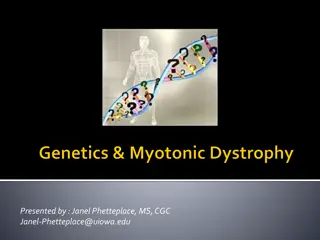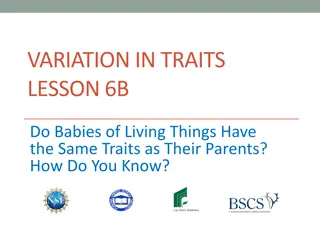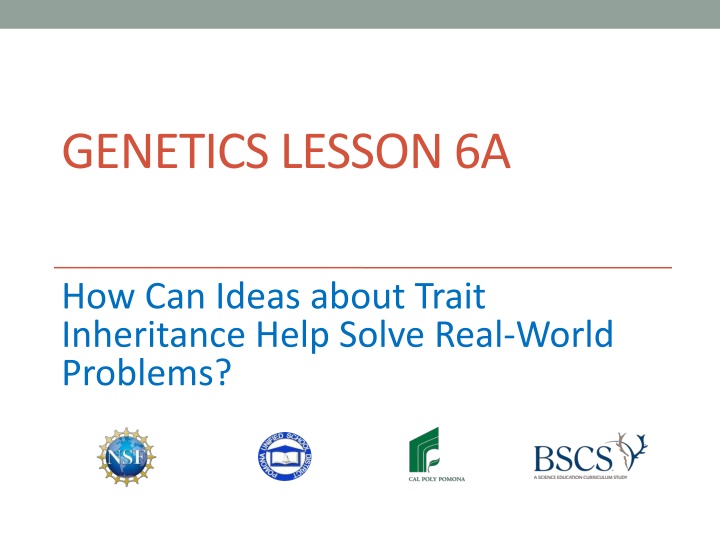
How Ideas on Trait Inheritance Solve Real-World Problems
Using a simple model of inheritance, learn how genetic concepts help resolve real-life challenges. Explore the Wilson family case dealing with Marfan syndrome inheritance and pedigree analysis to predict the chances of passing on the genetic disease. Dive into discussions on genetic probabilities and family patterns to grasp the implications of trait inheritance in practical situations.
Download Presentation

Please find below an Image/Link to download the presentation.
The content on the website is provided AS IS for your information and personal use only. It may not be sold, licensed, or shared on other websites without obtaining consent from the author. If you encounter any issues during the download, it is possible that the publisher has removed the file from their server.
You are allowed to download the files provided on this website for personal or commercial use, subject to the condition that they are used lawfully. All files are the property of their respective owners.
The content on the website is provided AS IS for your information and personal use only. It may not be sold, licensed, or shared on other websites without obtaining consent from the author.
E N D
Presentation Transcript
GENETICS LESSON 6A How Can Ideas about Trait Inheritance Help Solve Real-World Problems?
A Simple Model of Inheritance Let s clean up our list of ideas about inheritance on our class chart. Look over our chart and identify a few key science ideas that help us understand how traits are passed from parents to offspring across generations. From this list, we ll create a new class chart of ideas about inheritance that we can use as a conceptual model for solving real-life problems.
Lesson Focus Question How can ideas about trait inheritance help solve real-world problems?
The Wilson Family Peter and Susanna Wilson want to have children, but a genetic disease called Marfan syndrome runs in both of their families. People with this disease are very tall and can have many health problems. How do you think the science ideas in our simple model of inheritance can help the Wilsons find out whether their kids might inherit this disease?
The Wilson Family Pedigree Shade the circle or square of any family member who has Marfan syndrome. Marfan syndrome is caused by a dominantallele (M), so anyone who doesn t have it must have two recessive alleles (mm). Write mm below the name of any family member who does not have Marfan syndrome. Then use this information to figure out the possible allele combinations of other family members. If more than one allele combination is possible for an individual, write both combinations under that person s name.
Pedigrees and Punnett Squares Small groups: 1. Review the Wilson family case history and pedigree instructions in handout 6.1. Shade in the circles and squares on the pedigree diagram (handout 6.2) to show which family members have Marfan syndrome. 2. Use this information to figure out the possible allele combinations of each family member and write the alleles under each person s name on the pedigree. 3. Then create a Punnett square (handout 6.1) showing the possible allele combinations of Peter and Susanna s offspring and calculate the ratio of offspring with and without Marfan syndrome.
Discussion Questions 1. How would you explain to Peter and Susanna the chances that any of their children will inherit Marfan syndrome? 2. Does the pattern of brothers and sisters with Marfan syndrome in Peter s and Susanna s families match what you would expect based on the alleles of their parents? Explain your thinking.
Lets Summarize! Today s focus question: How can ideas about trait inheritance help solve real-world problems? Turn and Talk: Discuss this question with a partner, thinking specifically of the Wilson family and how science ideas about inheritance helped answer Peter and Susanna s questions about the chances of their children inheriting Marfan syndrome.
Next Time In our final lesson, we ll pull together all the science ideas on inheritance that we ve learned about in this unit and use them to investigate a second case study. Then we ll revisit our unit central question, Why are individuals of a species different from one another?


